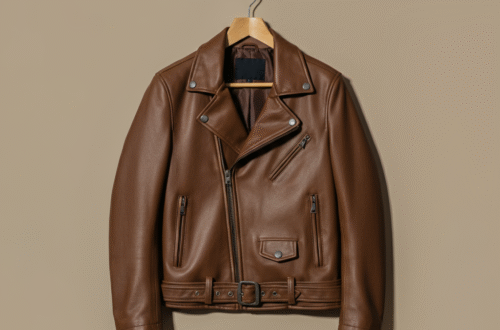Investing in jewelry is a significant decision, and understanding the materials is key to making a choice you’ll love for years. When it comes to gold, you’ve likely seen numbers like 10k, 14k, and 24k. Among these, 18k gold rings stand out as a popular and high-quality option, perfectly balancing purity with practicality. They offer a rich, vibrant color and substantial gold content, making them a preferred choice for everything from engagement rings to everyday fashion pieces.
This guide will walk you through everything you need to know about 18k gold rings. We’ll explore what “18k” actually means, compare it to other gold types, and cover the pros and cons. By the end, you’ll have the confidence to choose the perfect ring for your style and budget.
Key Takeaways
- High Purity: 18k gold is 75% pure gold, offering a rich, deep yellow hue that is highly desirable.
- Durability: While softer than 14k gold, 18k gold is durable enough for everyday wear, especially when cared for properly.
- Hypoallergenic: The high gold content makes 18k gold rings a great choice for people with sensitive skin, as they contain fewer metal alloys.
- Value: Due to their higher gold content, 18k gold rings are more valuable and retain their worth better over time compared to lower-karat options.
What Does “18k” Mean in 18k Gold Rings?
When you see “18k” stamped on a piece of jewelry, it’s a mark of its purity. The “k” stands for karat, which is the system used to measure the proportion of pure gold in a metal alloy. Pure gold is 24 karats, meaning it’s 100% gold with no other metals mixed in. While that sounds luxurious, 24k gold is extremely soft and not practical for jewelry that you wear regularly, as it would easily bend and scratch.
To create more durable jewelry, gold is mixed with other metals like copper, silver, nickel, and zinc. These mixtures are called alloys. An 18k gold ring is made of 18 parts pure gold and 6 parts other metals. This breaks down to 75% pure gold and 25% alloy metals. This blend is the sweet spot for many people, providing the beautiful, rich color of high-purity gold along with the strength needed to withstand daily life. The specific metals used in the alloy also determine the final color of the gold, leading to variations like yellow, white, and rose gold.
The Different Colors of 18k Gold
Gold’s versatility is one of its most appealing qualities. The 25% alloy content in 18k gold rings can be adjusted to create a stunning array of colors. Each color has its own unique charm and appeal, allowing you to express your personal style.
18k Yellow Gold Rings
This is the most traditional and classic color. To achieve its warm, sunny hue, 18k yellow gold is typically alloyed with a mix of copper and silver. Because it contains 75% pure gold, its color is much richer and more intense than 14k or 10k yellow gold. This vibrant color makes it a timeless choice for wedding bands and engagement rings, exuding a sense of luxury and tradition.
18k White Gold Rings
For a modern and sleek look, many people turn to white gold. 18k white gold is created by alloying pure gold with white metals like palladium, nickel, or silver. To enhance its bright, silvery-white appearance, it is almost always plated with rhodium. This plating gives it a brilliant shine and added durability. Keep in mind that this rhodium plating can wear off over time, requiring re-plating every few years to maintain its luster.
18k Rose Gold Rings
Rose gold has seen a huge surge in popularity for its romantic, pinkish hue. This beautiful color is achieved by mixing pure gold with a higher proportion of copper. The copper provides the reddish tint, and the amount used determines the intensity of the color. 18k rose gold rings offer a softer, warmer alternative to yellow gold and look flattering on nearly every skin tone.
Comparing 18k Gold Rings to Other Karats
Choosing the right gold karat depends on your priorities—whether they are color, durability, or budget. Here’s how 18k gold rings stack up against other common options.
|
Feature |
10k Gold |
14k Gold |
18k Gold |
24k Gold |
|---|---|---|---|---|
|
Pure Gold Content |
41.7% |
58.3% |
75% |
99.9% |
|
Durability |
Most durable |
Very durable |
Durable |
Very soft |
|
Color |
Paler yellow |
Rich yellow |
Deeper yellow |
Intense orange-yellow |
|
Hypoallergenic? |
Less likely |
Fairly good |
Very good |
Excellent |
|
Cost |
Least expensive |
Mid-range |
More expensive |
Most expensive |
|
Best For |
Extreme durability, budget |
Balance of durability & color |
Rich color, luxury |
Investment, not jewelry |
18k Gold vs. 14k Gold
This is one of the most common comparisons when buying gold jewelry. A 14k gold ring is 58.3% pure gold, making it more durable and less expensive than an 18k ring. However, its color is slightly less vibrant. In contrast, an 18k gold ring has a richer, more saturated yellow color due to its higher gold content. While it’s slightly softer than 14k gold, it is still perfectly suitable for everyday wear, especially for items like wedding bands that aren’t exposed to constant hard knocks. For those with sensitive skin, 18k gold is also a better choice because it has fewer alloy metals.
18k Gold vs. 10k Gold
10k gold contains only 41.7% pure gold, making it the most durable and affordable option among the three. Its high alloy content means it’s very resistant to scratches and dents. However, this also means its color is noticeably paler than 18k gold. Furthermore, the higher percentage of other metals, like nickel, makes 10k gold more likely to cause skin irritation for some people. If you prioritize the rich, luxurious color of gold and have sensitive skin, 18k gold rings are a far superior choice.
Pros and Cons of Choosing 18k Gold Rings
Like any material, 18k gold has its own set of advantages and disadvantages. Weighing them can help you decide if it’s the right choice for your lifestyle and preferences.
The Advantages
- Rich, Vibrant Color: The high gold content gives 18k gold rings a deep, luxurious color that is unmatched by lower karats.
- Hypoallergenic Properties: With 75% pure gold, there’s less room for other metals that can cause skin reactions, making it an excellent choice for sensitive skin.
- Prestige and Value: An 18k stamp signifies a high-quality, valuable piece of jewelry. It holds its value well over time due to its significant gold content.
- Perfect for Fine Jewelry: It’s the standard for high-end designers and is often used for intricate engagement rings where the beauty of the metal is just as important as the gemstone.
The Disadvantages
- Softer and Less Scratch-Resistant: Compared to 14k and 10k gold, 18k gold is softer. This means it can be more prone to scratches and dents with rough wear. It’s a trade-off for its beautiful color.
- Higher Cost: Naturally, more gold means a higher price tag. 18k gold rings are more expensive than their 14k and 10k counterparts.
- Not Ideal for Extremely Active Lifestyles: If you work with your hands or lead a very active lifestyle, you might find a 14k gold ring to be a more practical choice for durability’s sake.
How to Care for Your 18k Gold Ring
Proper care is essential to keep your 18k gold ring looking as beautiful as the day you got it. Since it’s a softer metal, a little bit of mindfulness goes a long way.
Regular Cleaning
To keep its shine, clean your ring regularly. You can do this at home with a simple solution of warm water and a few drops of mild dish soap.
- Soak your ring for about 15-20 minutes.
- Gently scrub it with a soft-bristled toothbrush to get into any crevices.
- Rinse it thoroughly under clean water.
- Pat it dry with a soft, lint-free cloth.
Avoiding Harsh Chemicals
Chemicals found in household cleaners, chlorine in swimming pools, and even some lotions and perfumes can damage the metal or cause it to discolor. It’s always a good idea to remove your ring before cleaning, swimming, or applying beauty products.
Safe Storage
When you’re not wearing your 18k gold ring, store it in a soft pouch or a separate compartment in your jewelry box. This prevents it from getting scratched by other, harder pieces of jewelry.
Know When to Take It Off
While durable enough for daily wear, it’s wise to remove your ring during activities that could cause damage. This includes going to the gym, gardening, or doing any heavy lifting.
Is an 18k Gold Ring Right for You?
The decision to choose an 18k gold ring ultimately comes down to personal preference. If you are looking for a piece that radiates luxury with a deep, rich gold color and you don’t have an extremely active lifestyle, then an 18k gold ring is an excellent choice. It’s the preferred metal for many high-end jewelry pieces for a reason—it simply looks and feels special.
For an engagement ring or wedding band, an 18k gold setting beautifully complements a high-quality diamond, enhancing its sparkle with its warm glow. If you’re looking for more style inspiration and to see how different pieces look, you can explore collections at resources like the truefashionstory.com Blog.
Ultimately, an 18k gold ring is an investment in timeless beauty. Its blend of purity and strength has made it a cherished standard in fine jewelry for centuries.
Frequently Asked Questions (FAQ)
Q1: Will an 18k gold ring tarnish?
A: Pure gold does not tarnish. However, since 18k gold is an alloy, the other metals (like copper or silver) can technically react to elements in the air and tarnish over time. This is very rare for 18k gold due to its high purity, and any slight discoloration can be easily cleaned off.
Q2: Are 18k gold rings good for everyday wear?
A: Yes, 18k gold rings are suitable for everyday wear, especially if you are mindful of them. While softer than 14k gold, they are still strong enough for most daily activities. Just remember to remove them during high-impact sports or when working with your hands.
Q3: How can I tell if my ring is 18k gold?
A: Look for a hallmark stamp on the inside of the ring band. An 18k gold ring should be stamped with “18k,” “18kt,” or “750” (which signifies 75% gold).
Q4: Why are 18k gold rings more expensive?
A: The price of a gold ring is largely determined by its gold content. Since 18k gold rings contain 75% pure gold, compared to 58.3% in 14k rings, they require more of the precious metal and therefore cost more.
Q5: Is 18k white gold a good choice?
A: Absolutely. 18k white gold offers the same high gold content and hypoallergenic benefits as yellow gold but with a modern, platinum-like appearance. Just remember that it will need to be re-plated with rhodium every few years to maintain its bright white finish.





